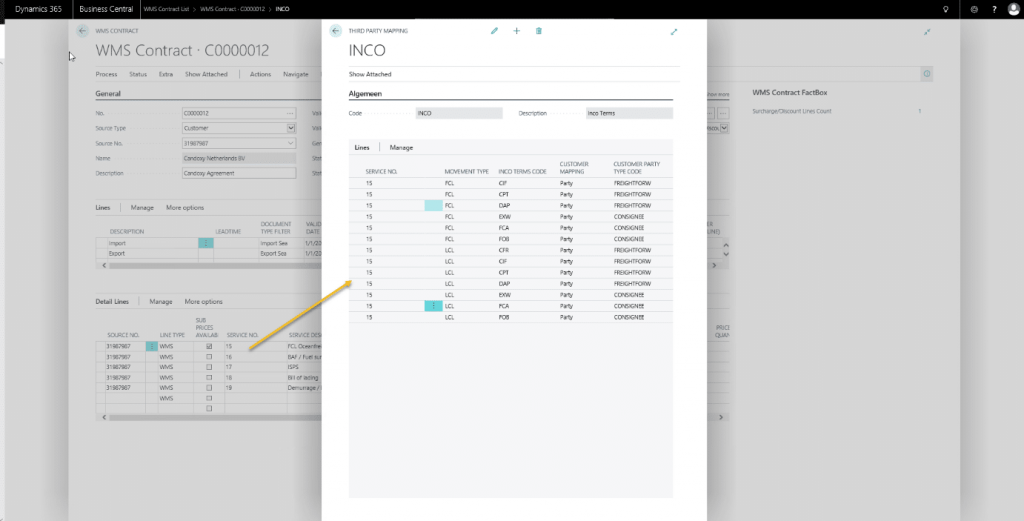
Air freight, Blogs, Finance, Finance, Sea freight, Transportation, Warehousing, Warehousing
Outsource services and invoice third parties correctly
Date
28 November, 2019
Reading time
4min. reading time
As a freight forwarder within ocean freight, you often work together with several parties on one order, to deliver the best service possible. Depending on the Incoterms, this can lead you to charging your services not to your client (usually the owner of the goods), but to another third party.
In the overview below, this situation is represented in a simple manner. For every specific combination you want to invoice the consignee or a third party. Before, this was possible in our FMS by setting up a contract for each individual party. By the use of Third Party Mapping we simplified this process. You can find out how in this blog.

Automatically invoice a third party: third party mapping
Based on the example above, we expanded our Contracts module with third party invoicing. In other words: from one customer contract, you have the option to charge services to separate partners, depending on the Incoterm. That way, the invoice is sent to the correct client. Without your intervention.
Invoice a third party via mapping and Document parties
How exactly does this work? On the contract detail line, you will find a new field: Third party mapping. In this mapping table, you can define the mapping per service, movement type and Incoterm. This way, you appoint the service to a document party, such as an agent, freight forwarder or consignee. At the moment that the services are added to the shipment, every service line will automatically determine the correct Sell-to customer. The unit price is retrieved from the regarding contact, if a specific contract is set up for that third party. Then, the price is set based on this contract.

Setting it up once saves you repeatable tasks
Characteristic of desiging Contracts in your WMS, TMS or FMS, is that taking your time once saves you lots of time from that moment on. Day tasks will take you no more than a few hours. Errorprone activities will become errorfree due to automation. And research time belongs to the past. This addition makes sure that an order with multiple invoices, all of those invoices reach their destination. And this is not something you need to look into each time, you did this already when setting up the contracts.
Adjustment between a general and specific customer contract
As mentioned before, you already had the option to set u specific contracts for the aforementioned examples in this blog. The biggest difference that third party mapping creates, is that you do not need ten different contracts for ten combinations anymore. You easily set it up in one general contract and the rest follows. If a valid tariff is found in a specific customer contract for the regarding customer, this tariff is applied instead of the tariff from the general contract. This means that the specific agreements between you and your customer always comes first.
Contracts module? This functionality is an addition to the existing (WMS-)Contracts module. A solution that helps you, based on predefined contracts, charge the correct tariffs per order. Besides the time you safe in your daily routine, this module has more benefits.
Outsource services and correctly charge third parties
Do you recognize yourself in this situation? Are you spending too much time finding out who needs to collect which invoice, or did you need to set up a separate contract for each service combination? If so, go for efficiency with third-party invoicing. The adjustment between the general contract and your specific customer contracts makes sure that after each order, the right party receives an invoice. Do you want to know more? Please contact us and ask about the possibilities.

